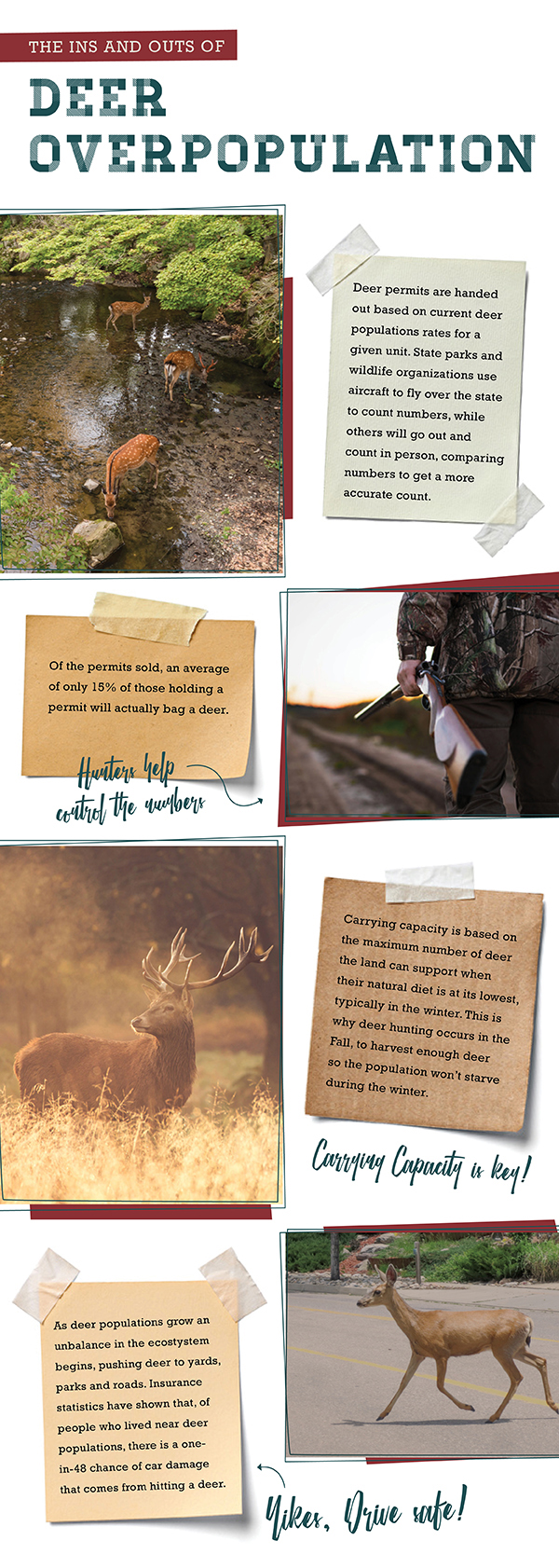What are the Causes and Effects of Deer Overpopulation?
Aug 5th 2021

In the late 19th Century, deer were on the verge of becoming extinct. So much that the United States Supreme Court passed laws to protect them from hunters. Along with these laws, and the changes in environment brought on by American settlers who cleared land for farming, the deer population steadily rose into the 21st Century.
The United States now faces the opposite of extinction...overpopulation. Deer overpopulation continues to be a widespread issue across the country, and the need to check and control the deer population continues to remain an integral process in keeping their numbers down. A variety of additional causes contribute to the ever-growing number of deer throughout the country. Let's take a look at both cause and effect in relation to deer overpopulation.
CAUSES
Abandoned Farmland
Abandoned farmland across the country become ideal browsing and breeding grounds for deer. Some of these farms actually became abandoned because of the deer. Large numbers of deer would forage on active farmlands to the point of damaging crops, causing huge losses for farmers.
Inaccurate population counts
Ongoing efforts to obtain an accurate count of deer across the country is cumbersome and widely inaccurate. The process involves conducting a census by eye, either on ground or a fly over of the area being surveyed. Modern technologies, such as infrared cameras, have increased the accuracy of populations counts, yet remain inconclusive. If deer counts cannot be accurately measured, they cannot be managed.
Hunting Restrictions
Inaccurate population counts of deer lead to inaccurate hunting restrictions. If the census is understated at any given time, and a lower number of permits for hunting are issued, it may cause an even greater increase in the deer population. Hunters may also kill fewer deer during a hunting season, which will sustain the current population and risk increases in population stemming from basic reproduction.
Loss of Interest in Hunting
New generations are less interested in hunting than previous generations. Technological advancements give children a wider variety of activities in which to participate without ever leaving their homes. Increasing numbers of the population have lost interest in hunting as a sport, and in turn, play video games that simulate the hunting experience. In addition, the need to hunt for food has greatly decreased during the past 100 years as supermarkets opened across the country.
EFFECTS
Ecosystem Changes
Over-browsing of large numbers of deer change ecosystem environments. They eat reproducing seeds of plants and trees that other animals use for food and shelter. Deer predators are being hunted and relocated by humans, hence increasing the population of deer. The deer also change the nutrients in the soil needed for plants and trees to reproduce and grow. Invasive plants otherwise unable to flourish in certain ecosystems eventually become dominate in the wake of the over-browsing deer.
Disease
Deer provide the transportation of ticks that carry Lyme disease. This increases the transmission of Lyme disease to humans as deer venture into residential yards to graze. Infected ticks will continue to infect humans as long as the overpopulation of deer continue to transport them close to where humans work, live, and play.
Damage to Homeowner Lands and Gardens
As humans take away the deer's natural habitat, deer are forced elsewhere to look for food. Ironically, they venture into the same land taken from them and end up destroying residential gardens and farmlands.
Automobile Accidents
A rise in automobile accidents occur when the deer population increases. Not only are deer found in residential yards, but on roads and highways where drivers are taken off guard by a deer in motion. An interaction with a deer while driving can be fatal for deer and humans alike. Predicting this type of accident is nearly impossible.
These are just a few of the causes and effects of deer overpopulation. If the problem was easy enough to solve, it would not be a problem today. you can read more information on the subject at the National Wildlife Association, and also at Mother Earth News.

